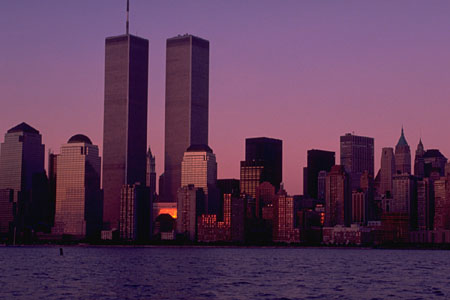 In Nash v. Port Authority of N.Y. and N.J. , the Port Authority got slammed for failing to take measures to improve security at the World Trade Center -- particularly its underground public parking facility -- despite warnings that an attack was likely to occur.
In Nash v. Port Authority of N.Y. and N.J. , the Port Authority got slammed for failing to take measures to improve security at the World Trade Center -- particularly its underground public parking facility -- despite warnings that an attack was likely to occur.
On February 26, 1993, terrorists drove into the WTC parking facility, armed with 1,500 pounds of dynamite set to explode within ten minutes. While the terrorists left unscathed, 6 people lost their lives and hundreds of others were injured.
For almost a decade prior, the Port Authority had received analysis foreshadowing the event. In 1984, Scotland Yard had been "appalled to hear" that the WTC still had "transient public parking directly underneath the Towers." In 1985, the Port Authority 's Office of Special Planning issued a report concluding that it was not "merely possible, but 'probable,' there would be an attempt to bomb the World Trade Center." The report stressed the urgency of improving security by "screening entering vehicles for explosives." In 1986, an outside consulting firm, Science Applications International Corporation , offered an "Attack Scenario," which detailed the consequences of a WTC terrorist attack
Inexplicably, the Port Authority ignored all those warnings. When it was later sued, the entity argued it was under "no legally enforceable obligation to take any of the recommended precautions" and "the likelihood of the bombing ... was not shown."
When the New York County Supreme Court denied the Port Authority 's motion to dismiss the case, an appeal to the Appellate Division, First Department, followed. The AD1 concluded the entity "failed in its capacity as a commercial landlord to meet its basic proprietary obligation to its commercial tenants and invitees to reasonably secure its premises, specifically its public parking garage, against foreseeable criminal intrusion."
While the attack was unprecedented, the Port Authority "had ample notice that a car bombing such as the one that occurred was not merely possible, but could very well occur if obvious, specifically identified vulnerabilities were not addressed." Particularly because the risks were so "monstrous," it was unreasonable for the Port Authority to refuse to "minimize the risk of harm from criminality upon its premises."
According to the AD1, implementation of those "target-hardening recommendations" would have triggered an "inconsequential" revenue loss when compared to the $100 million in income the Port Authority then received from its WTC tenants.
We would like to know the names of the state officials who placed New Yorkers' lives in needless jeopardy, all in the interest of capital preservation and revenue generation.
Lady Liberty's light should shine bright on them, as they stand before us in shame.

To download a copy of the Appellate Division's decision, please use this link: Nash v. Port Authority of N.Y. and N.J
